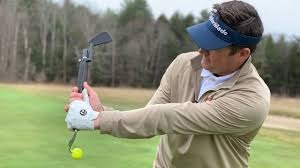In greater latest times the validity of those resources has been known as into question on grounds. First, pictorial proof now appears to factor to a continental European foundation of golf. The earliest golfing image is a miniature in a e-book of hours formerly owned by way of Adelaïde of Savoy, the duchess of Burgundy. Executed about the center of the 15th century (Chantilly, Musée Condé, MS seventy six), it predates the earliest of the Scottish assets quoted above. The miniature from Adelaïde’s ebook is, in turn, the forerunner of the golf training aids famous example from a e book of hours within the British Library that is ascribed variously to the workshops of Flemish artists, Simon Bening (c. 1483–1561) and Gerard Horenbout (c. 1465–1541), both of whom had been energetic within the Ghent-Bruges college within the first half of of the 16th century. There is but some other miniature, from the book of hours of Philip I (the Handsome), the son of Emperor Maximilian I (Colegio Real de Corpus Christi, Valencia). Created in 1505, 365 days earlier than Philip’s loss of life, it shows golfers in the method of swinging and setting.

In addition to the books of hours, there are engravings that spotlight golf. Playing Monkeys, by way of Pieter van der Borcht (1545–1608), features a monkey taking a swing at a teed ball, and Venus, Protectress of Lovers, by means of Pieter Janszoon Saenredam (1597–1665), suggests, in the margins of a photo of an embracing couple with Venus and Cupid, a few human beings gambling video games along with football and golfing. The latter work is a duplicate of an in advance work through engraver Hendrik Goltzius (1558–1617).
The earliest known scenes depicting golfing in Scotland are determined in two artwork dated 1680 (or 1720) and 1746–forty seven. The in advance paintings is an oil painting via an unknown artist who depicted a gentlemen foursome and two caddies against the backdrop of the town of St. Andrews. The 2nd, a watercolour through the Englishman Paul Sandby (1725–1809), suggests a squad of soldiers combating over a golfing ball within the shrubbery on the foot of Edinburgh Castle.